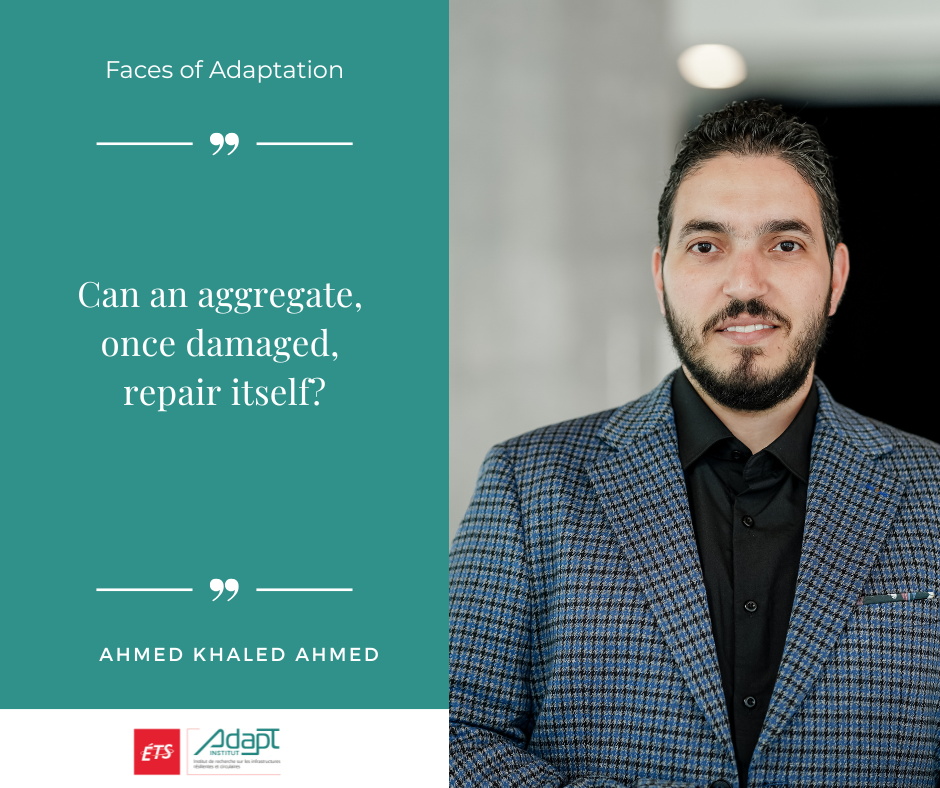Extending the Lifespan of Infrastructure in a Changing Climate

Ahmed Khaled Ahmed, a PhD student at Concordia University, received a $20,000 scholarship from the Institute for Research on Resilient and Circular Infrastructure (AdapT) to support an innovative research project on the resistance of aggregates to temperature variations. Here’s what the project is about.
Briefly summarize your research project.
I’m working on developing an aggregate intended for the construction of various types of infrastructure, one that has a smaller carbon footprint than currently available materials.
I’m also trying to answer the following question: is it possible for the aggregate, once damaged, to repair itself if its chemical composition allows it? If so, under what conditions and circumstances? That’s what I intend to find out.
What are the stages of your research project?
The project includes three phases.
First, I’ll conduct a literature review to determine which dry aggregate components are the most resistant when exposed to high temperatures and which have the lowest ecological footprint.
Then, I’ll modify the mix of those components to optimize their resistance capacity by adding an internal alkaline agent that will promote self-healing of cracks, much like white blood cells in our body.
During these two stages, I’ll expose my sample mixes to different temperatures to determine which mixture is most resistant.
The third and final step will be to examine under what conditions cracks are likely to heal best and fastest.
In short, the goal is to determine the best mix so the aggregate is as resistant as possible to temperature variations and under what conditions its composition can help reduce or repair the cracks and damage caused by wear or exposure to extreme weather.
How does your research address climate change-related challenges?
One of the main consequences of climate change is global warming. This includes more frequent and intense wildfires.
By finding the “recipe” for an aggregate that’s more resistant to temperature changes — especially extreme heat — we can help combat the effects of climate change.
How could governments, municipalities, and the private sector benefit from your project?
If we use a material in future infrastructure projects — whether bridges or buildings — that generates fewer greenhouse gases and is more heat resistant, we’ll have structures that are more resilient to climate change, global warming, and even wildfires.
If we can optimize the material to self-heal its cracks within days, that would be fantastic. It would greatly reduce the costs of repair and, especially, demolition. We wouldn’t have to tear everything down to rebuild.
Most importantly, the lifespan of these infrastructures could be extended — a benefit that should not be underestimated.
